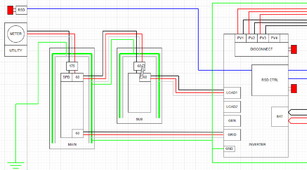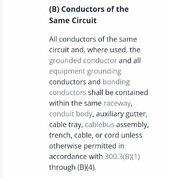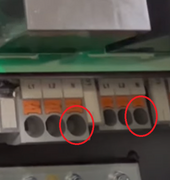Hedges
I See Electromagnetic Fields!
- Joined
- Mar 28, 2020
- Messages
- 21,483
This sounds similar to what I described?
The correct way to do this is with a single neutral to each point, from a central connection.
Example:
A wire trough under the 3 pieces of equipment. (Main panel, sub panel, inverter)
A neutral terminal block in the trough. And a single neutral from the terminal block to each piece of equipment.
Yup. Tee connection formed in wiring trough.
(I hadn't read all the words and formed a picture in my mind. When I provide pictures to clarify my writing, it is usually an image stolen from the web.)
An upside of trough vs. conduit Tee like I used is much greater cross section for additional runs. And ability to tap off more conduit sections.
See, I'm learning from you guys on this forum!
I now have a 24" trough under my house where four electrical panels connect, and will put a 36" one between my Sunny Islands and the garage loads panel.
I also used a 3R trough above PV combiner panel at my old place.







